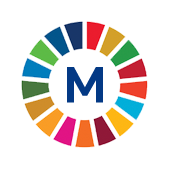 6.4.2 Level of water stress: freshwater withdrawal as a proportion of available freshwater resourcesMetadataPeriod: AnnualYear: 2025 |
 6.4.2 Level of water stress: freshwater withdrawal as a proportion of available freshwater resourcesMetadataPeriod: AnnualYear: 2025 |
| METADATA |
| Indicator information |
| Definition and methodology |
| Data source type and data collection method |
| Notes |
| ID of global indicator |
| Metadata update |
| Global metadata |
| Indicator information | Top |
| Indicator | |
6.4.2 Level of water stress: freshwater withdrawal as a proportion of available freshwater resources | |
| Global indicator name | |
6.4.2 Level of water stress: freshwater withdrawal as a proportion of available freshwater resources | |
| Target | |
6.4 By 2030, substantially increase water-use efficiency across all sectors and ensure sustainable withdrawals and supply of freshwater to address water scarcity and substantially reduce the number of people suffering from water scarcity | |
| Goal | |
Goal 6. Ensure availability and sustainable management of water and sanitation for all | |
| Definition and methodology | Top |
| Definition | |
The level of water stress: freshwater withdrawal as a proportion of available freshwater resources is the ratio between total freshwater withdrawn by all major sectors and total renewable freshwater resources, after taking into account environmental flow requirements.
Total freshwater withdrawal (TFWW) is the volume of freshwater extracted from its source (rivers, lakes, aquifers) for agriculture, industries and services. It is estimated at the country level for the following three main sectors: agriculture, services (including domestic water withdrawal) and industries (including cooling of thermoelectric plants).
Internal renewable water resources are defined as the long-term average annual flow of rivers and recharge of groundwater for a given country generated from endogenous precipitation.
External renewable water resources refer to the flows of water entering the country, taking into consideration the quantity of flows reserved to upstream and downstream countries through agreements or treaties.
Environmental flow requirements (EFR) are defined as the quantity and timing of freshwater flows and levels necessary to sustain aquatic ecosystems, which, in turn, support human cultures, economies, sustainable livelihoods, and wellbeing. | |
| Methodological explanations | |
Data on water abstraction for the needs of agriculture, industry and services are obtained from statistical surveys, data on total renewable water resources from administrative sources, while data on Environmental flow requirements is provided by FAO. | |
| Method of calculation | |
Method of computation: The indicator is computed as the total freshwater withdrawn (TFWW) divided by the difference between the total renewable freshwater resources (TRWR) and the environmental flow requirements (EFR), multiplied by 100. All variables are expressed in 109 m3/year).
Stress (%)= TFWW/((TRWR-EFR) )×100
Following the experience of the initial five years of application of the indicator, the threshold of 25% has been identified as the upper limit for a full and unconditional safety of water stress as assessed by the indicator 6.4.2.
Above 25% of water stress, four classes have been identified to signal different levels of stress severity:
NO STRESS <25%
LOW 25% - 50%
MEDIUM 50% - 75%
HIGH 75-100%
CRITICAL >100% | |
| Unit of measure | |
% | |
| Available disaggregation | |
| Territorial level | |
Republic of Serbia | |
| Data source type and data collection method | Top |
| Data source | |
Statistical Office of the Republic of Serbia | |
| Periodicity of data collection | |
Annual | |
| Notes | Top |
| ID of global indicator | Top |
C060402 | |
| Metadata update | Top |
| 24/6/2025 | |
| Global metadata | Top |
https://unstats.un.org/sdgs/metadata/files/Metadata-06-04-02.pdf | |